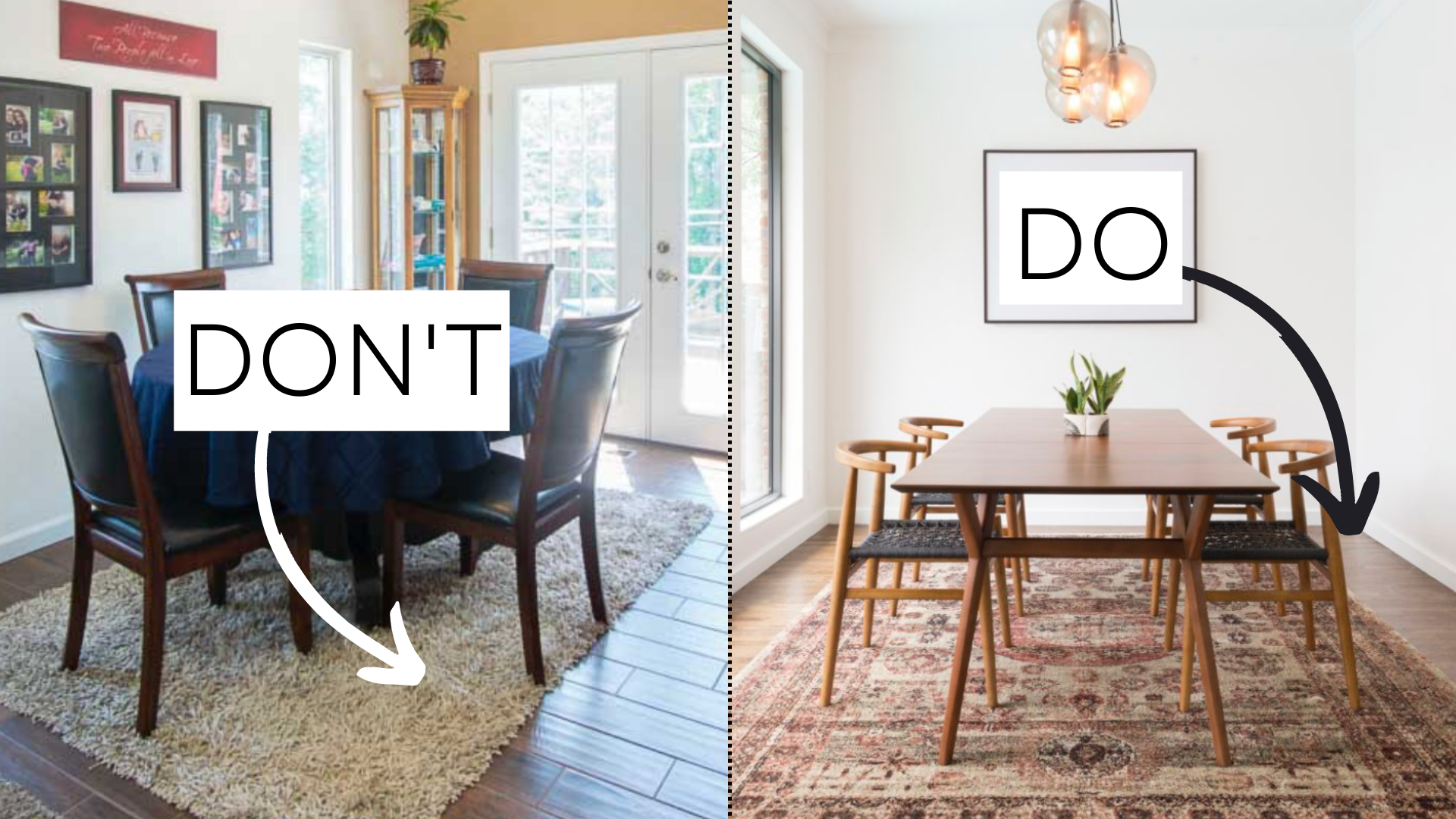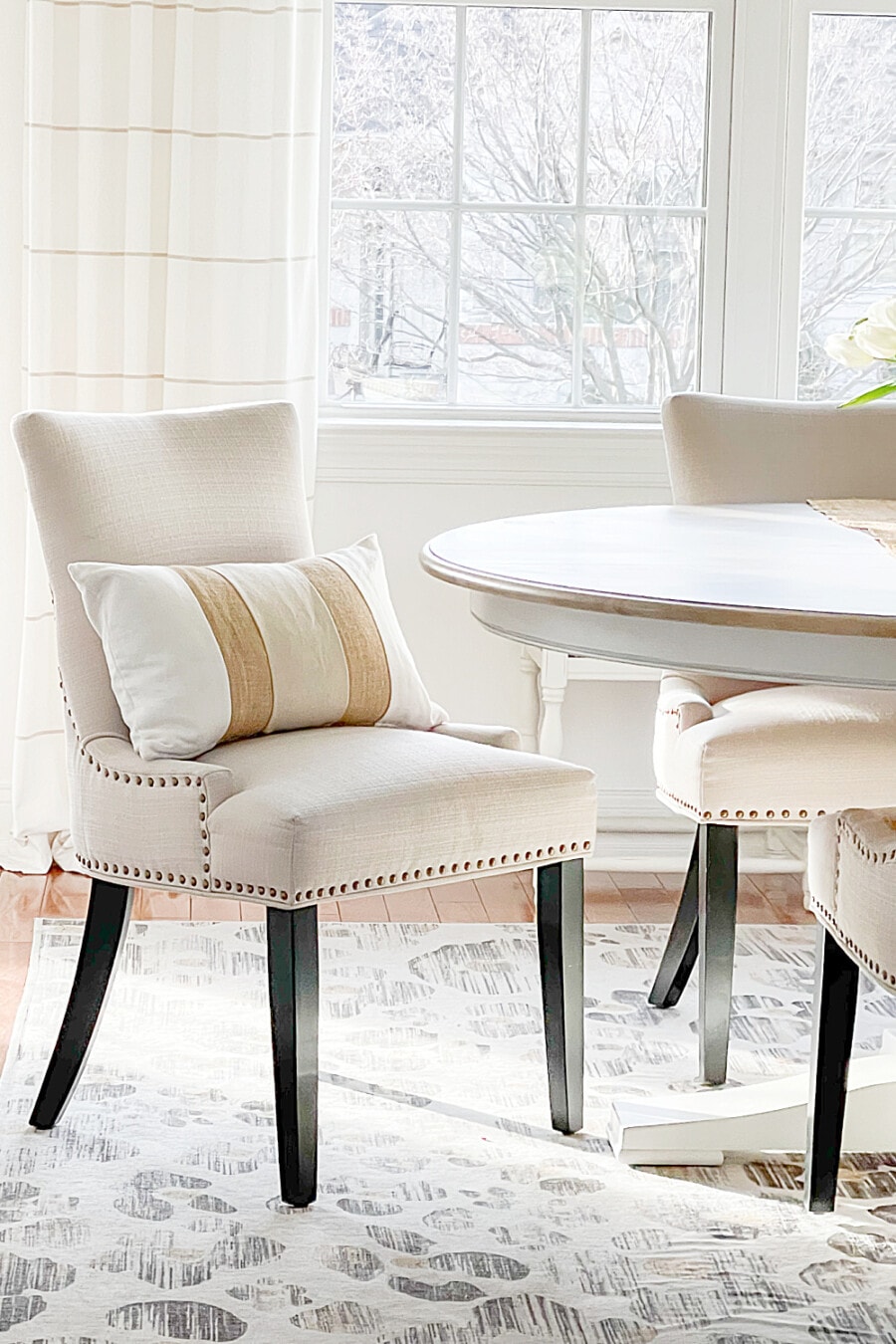Rug for Dining Room
Adding a rug to your dining room can instantly transform the space and create a cozy and inviting atmosphere. But do you really need a rug in your dining room? The answer is, it depends on your personal preferences and the design of your dining room.
Dining Room Rug Ideas
If you do decide to add a rug to your dining room, the first step is to gather some ideas and inspiration. There are endless options when it comes to dining room rugs, from traditional to modern, neutral to bold, and everything in between. Take some time to browse through different styles and see what speaks to you.
Choosing the Right Rug for Your Dining Room
When choosing a rug for your dining room, there are a few factors to consider. First, the size of the rug is important. You want to make sure it is large enough to fit under your dining table and chairs, with at least 24 inches of extra space on all sides. This will prevent the chairs from slipping off the rug when pulled out.
Next, think about the material of the rug. For a dining room, it is best to choose a durable and easy-to-clean material such as wool, cotton, or synthetic fibers. These materials are also great for high-traffic areas and can withstand spills and stains.
Lastly, consider the color and pattern of the rug. If your dining room is already quite busy with furniture and accessories, a neutral or solid-colored rug may be the best choice. On the other hand, if your dining room is more minimalistic, a bold patterned rug can add some interest and personality to the space.
Dining Room Rug Size
As mentioned before, the size of your rug is crucial in a dining room. The general rule of thumb is to choose a rug that is at least 24 inches larger than your dining table on all sides. This will ensure that the rug is proportionate to the table and chairs and creates a cohesive look in the room.
How to Style a Rug in Your Dining Room
Once you have chosen the perfect rug for your dining room, it's time to style it. The most common way to style a dining room rug is to place it under the dining table and chairs. However, if you have a smaller space, you can also place the rug at an angle under the table to create the illusion of a larger room.
Another option is to layer a smaller rug on top of a larger one. This can add some texture and dimension to the room and create a more relaxed and casual look.
Dining Room Rug Placement
The placement of your rug in the dining room is also important. It should be centered under the dining table, with equal amounts of rug showing on all sides. This will create a balanced and symmetrical look in the room.
If you have a larger dining room, you can also place a rug under a sideboard or buffet to define the space and add some visual interest.
Pros and Cons of Having a Rug in the Dining Room
Like any design element, there are pros and cons to having a rug in your dining room. The main advantage is that it can add warmth, texture, and visual interest to the space. It can also help to define the dining area in an open concept floor plan.
On the other hand, rugs can be a bit high-maintenance, especially in a dining room where spills and stains are more likely to occur. They also require regular cleaning and maintenance to keep them looking their best.
Best Materials for Dining Room Rugs
When it comes to materials, there are a few options that are best suited for a dining room. Wool is a popular choice as it is durable, stain-resistant, and has a soft and luxurious feel. Cotton is also a good option as it is easy to clean and comes in a variety of patterns and styles. Synthetic fibers such as nylon and polyester are also great for high-traffic areas and are more budget-friendly.
DIY Dining Room Rug
If you're feeling creative and want to save some money, you can also make your own dining room rug. There are plenty of DIY rug tutorials online that use materials such as drop cloths, paint, and stencils to create unique and personalized rugs.
Just keep in mind that DIY rugs may not be as durable as store-bought ones, so they may require more frequent cleaning and replacement.
How to Clean and Maintain a Dining Room Rug
To keep your dining room rug looking its best, regular cleaning and maintenance are necessary. Vacuuming once a week will help to remove dirt and debris. In case of spills, it's important to act quickly and blot the area with a clean, damp cloth. For tougher stains, you may need to use a mild detergent or seek professional cleaning services.
It's also a good idea to rotate your rug every few months to prevent wear and tear in high-traffic areas.
In conclusion, a rug can be a great addition to a dining room, adding style and comfort to the space. Just make sure to choose the right size, material, and placement for your specific dining room, and don't forget to clean and maintain it regularly to keep it looking its best. With these tips and ideas, you can create a beautiful and functional dining room that you and your guests will love.
Benefits of Having a Rug in the Dining Room
/choose-dining-room-rug-1391112-hero-4206622634654a6287cc0aff928c1fa1.jpg)
Enhances Aesthetics and Adds Warmth
 One of the main reasons why
dining rooms
need a
rug
is because it can enhance the overall aesthetics of the room. A well-chosen rug can add a touch of color, texture, and pattern to an otherwise plain and boring dining room. This can help tie the whole room together and make it more visually appealing. Additionally, a rug can add warmth to the space, especially during colder months, making it a cozy and inviting space for family and guests to gather.
One of the main reasons why
dining rooms
need a
rug
is because it can enhance the overall aesthetics of the room. A well-chosen rug can add a touch of color, texture, and pattern to an otherwise plain and boring dining room. This can help tie the whole room together and make it more visually appealing. Additionally, a rug can add warmth to the space, especially during colder months, making it a cozy and inviting space for family and guests to gather.
Defines the Space
 In an open floor plan, where the dining room is not separated from the living or kitchen area, a rug can help define the dining space. By placing a rug under the dining table and chairs, it creates a designated area for dining, visually separating it from the rest of the room. This can be especially useful for smaller spaces where there is no physical separation between different areas.
In an open floor plan, where the dining room is not separated from the living or kitchen area, a rug can help define the dining space. By placing a rug under the dining table and chairs, it creates a designated area for dining, visually separating it from the rest of the room. This can be especially useful for smaller spaces where there is no physical separation between different areas.
Provides Comfort and Reduces Noise
 Dining rooms are often high traffic areas where people gather for meals and conversations. Having a rug in the dining room can provide a comfortable surface for people to sit and stand on. This is especially beneficial for households with young children or elderly members who may need a softer surface to walk on. Additionally, a rug can help absorb sound and reduce noise, making it a more peaceful and comfortable dining experience.
Dining rooms are often high traffic areas where people gather for meals and conversations. Having a rug in the dining room can provide a comfortable surface for people to sit and stand on. This is especially beneficial for households with young children or elderly members who may need a softer surface to walk on. Additionally, a rug can help absorb sound and reduce noise, making it a more peaceful and comfortable dining experience.
Protects the Flooring
 Another practical reason why
dining rooms
need a
rug
is to protect the flooring underneath. Dining chairs can easily scratch or damage hardwood or tile floors, and a rug can act as a barrier between the chairs and the floor. This can help prolong the life of your flooring and save you from costly repairs or replacements in the future.
In conclusion, while adding a rug to your dining room may not be necessary, it can bring many benefits to the space. From enhancing aesthetics to providing comfort and protection, a rug can be a valuable addition to any dining room. Consider your personal style, the size and layout of your dining room, and the functionality you desire when choosing the perfect rug for your space. Trust us, your dining room will thank you for it.
Another practical reason why
dining rooms
need a
rug
is to protect the flooring underneath. Dining chairs can easily scratch or damage hardwood or tile floors, and a rug can act as a barrier between the chairs and the floor. This can help prolong the life of your flooring and save you from costly repairs or replacements in the future.
In conclusion, while adding a rug to your dining room may not be necessary, it can bring many benefits to the space. From enhancing aesthetics to providing comfort and protection, a rug can be a valuable addition to any dining room. Consider your personal style, the size and layout of your dining room, and the functionality you desire when choosing the perfect rug for your space. Trust us, your dining room will thank you for it.
































:max_bytes(150000):strip_icc()/DiningRoomwithRug-3034f93d3a964cc8b9ba8b690bebddfb.jpg)
















:max_bytes(150000):strip_icc()/choose-dining-room-rug-1391112-hero-4206622634654a6287cc0aff928c1fa1.jpg)





































